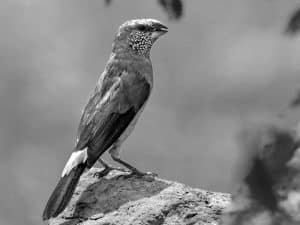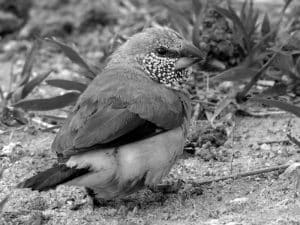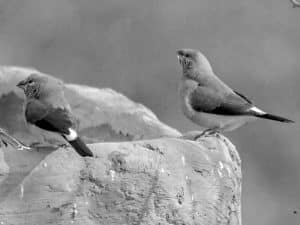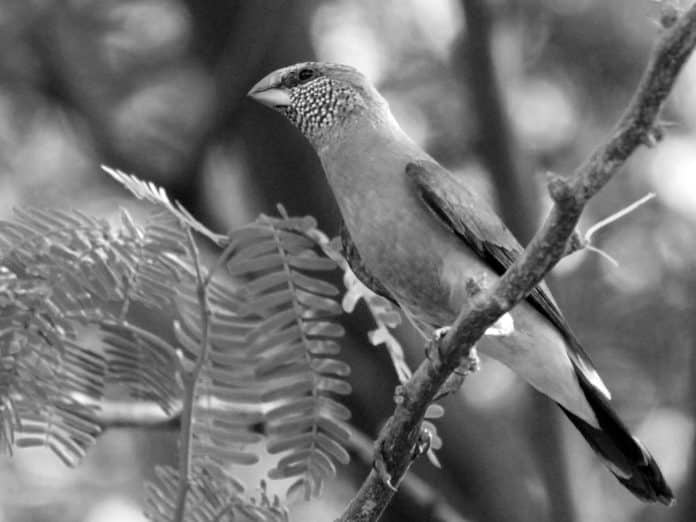Introduction to the Gray-Headed Silverbill
The gray-headed silverbill, a captivating member of the Estrildidae family, is a true gem in the avian kingdom of Tanzania. This diminutive yet striking bird, with its distinctive gray head and silver-white plumage, often goes unnoticed amidst the vibrant diversity of Tanzania’s rich birdlife. However, to the discerning birdwatcher, the gray-headed silverbill in Tanzania is a treasure worth seeking out, a testament to the subtle beauty that can be found in the natural world.

In this comprehensive guide, we’ll delve into the fascinating world of the gray-headed silverbill, exploring its habitat, physical characteristics, behavior, and conservation status within the stunning landscapes of Tanzania. Join us as we uncover the secrets of this elusive avian gem and discover why it deserves a closer look from both avid birders and nature enthusiasts alike.
Habitat and Distribution of the Gray-Headed Silverbill in Tanzania
The gray-headed silverbill is primarily found in the central and southern regions of Tanzania, where it thrives in a variety of habitats. These adaptable birds can be spotted in open woodlands, savanna, and even in the vicinity of human settlements, such as agricultural areas and rural villages.
One of the key factors that contribute to the gray-headed silverbill’s widespread presence in Tanzania is its ability to thrive in both natural and human-modified environments. This resilience has allowed the species to maintain a relatively stable population, even as some of its natural habitats have undergone changes due to human activities.
Interestingly, the gray-headed silverbill is often observed in close proximity to other finch species, such as the bronze mannikin and the black-rumped waxbill. This symbiotic relationship, where different bird species coexist and share resources, is a testament to the delicate balance of Tanzania’s avian ecosystems.
Physical Characteristics of the Gray-Headed Silverbill
The gray-headed silverbill is a small, delicate-looking bird with a distinctive appearance. As the name suggests, the most striking feature of this species is its gray head, which contrasts beautifully with its silver-white body plumage. The beak is short and conical, well-suited for its seed-based diet, and the eyes are dark, adding to the bird’s captivating gaze.
One of the unique traits of the gray-headed silverbill is its sexual dimorphism, where the males and females exhibit subtle differences in their physical characteristics. While the males tend to have a slightly more vibrant gray head and a more robust appearance, the females are often slightly smaller and have a slightly paler gray head.
Another fascinating aspect of the gray-headed silverbill’s appearance is its ability to molt, a process in which the bird sheds and replaces its feathers. During the molting season, you may notice subtle changes in the bird’s plumage, as it transitions between its breeding and non-breeding attire. This adaptability allows the gray-headed silverbill to maintain its optimal appearance throughout the year, ensuring it remains well-camouflaged and able to effectively navigate its environment.
Behavior and Feeding Habits of the Gray-Headed Silverbill
The gray-headed silverbill is a social and active bird, often seen in small flocks foraging for food or engaging in playful interactions with their flock mates. These birds are known for their lively and energetic movements, flitting from one perch to another with grace and agility.
When it comes to their feeding habits, the gray-headed silverbill is primarily a seed-eater, relying on a diverse range of grasses, cereals, and other small seeds as its primary food source. These birds are adept at locating and extracting the seeds from their husks, using their sharp beaks with great precision.
Interestingly, the gray-headed silverbill has also been observed feeding on small insects and spiders, particularly during the breeding season when the additional protein is crucial for their chicks’ development. This adaptability in their diet allows the gray-headed silverbill to thrive in a variety of habitats, ensuring they can meet their nutritional needs throughout the year.
One of the most fascinating aspects of the gray-headed silverbill’s behavior is its impressive nest-building skills. These birds construct intricate, dome-shaped nests using a variety of materials, such as grass, twigs, and even human-made fibers. The nests are often placed in the forks of trees or in dense vegetation, providing a safe and secure environment for the birds to raise their young.
Conservation Status and Threats to the Gray-Headed Silverbill

The gray-headed silverbill is currently classified as a species of “Least Concern” on the International Union for Conservation of Nature (IUCN) Red List of Threatened Species. This is a positive indication that the species’ population is stable and not facing immediate threats of extinction.
However, it is important to note that the gray-headed silverbill, like many other bird species, is not immune to the various environmental challenges that are impacting the natural world. Habitat loss, due to factors such as deforestation, agricultural expansion, and urbanization, can pose a significant threat to the species’ long-term survival.
Additionally, the gray-headed silverbill may be vulnerable to the impact of climate change, which can alter the availability and distribution of its preferred food sources and nesting sites. Ongoing monitoring and conservation efforts are crucial to ensure the continued well-being of this remarkable bird.
Interesting Facts about the Gray-Headed Silverbill
- The gray-headed silverbill is known for its melodious and varied vocalizations, which include a distinctive “tsee-tsee-tsee” call and a more complex, trilling song.
- These birds are known to form strong pair bonds and often engage in courtship rituals, such as synchronized flying and perching together.
- The gray-headed silverbill is a relatively long-lived species, with some individuals reaching up to 10 years of age in the wild.
- Interestingly, the gray-headed silverbill is known to be a brood parasite, occasionally laying its eggs in the nests of other finch species, such as the bronze mannikin and the black-rumped waxbill.
- Despite their small size, gray-headed silverbills are capable of migrating long distances, with some populations undertaking seasonal movements in response to changes in food availability and environmental conditions.
Birdwatching Tips for Spotting the Gray-Headed Silverbill in Tanzania
Observing the gray-headed silverbill in its natural habitat can be a rewarding experience for birdwatchers. Here are some tips to increase your chances of spotting this elusive avian gem:
- Time of Day: Gray-headed silverbills are most active during the early morning and late afternoon hours, when they are most likely to be foraging or engaging in social behaviors.
- Habitat Identification: Familiarize yourself with the preferred habitats of the gray-headed silverbill, such as open woodlands, savanna, and agricultural areas, and focus your search in these locations.
- Flock Identification: Gray-headed silverbills are often found in small, mixed-species flocks, so keep an eye out for other finch species that may be associating with the gray-headed silverbills.
- Vocalizations: Listen for the distinctive “tsee-tsee-tsee” call or the more complex trilling song of the gray-headed silverbill, as these can help you locate the birds even if they are not in plain sight.
- Patience and Persistence: Birdwatching requires a keen eye and a lot of patience. Be prepared to spend time scanning the environment and waiting patiently for the gray-headed silverbill to make an appearance.
Recommended Locations for Observing the Gray-Headed Silverbill in Tanzania
Tanzania is home to a diverse array of avian species, and the gray-headed silverbill can be found in numerous locations throughout the country. Here are some of the best places to observe this captivating bird:
- Tarangire National Park: This park is known for its diverse birdlife, and the gray-headed silverbill can often be spotted in the open woodlands and savanna habitats.
- Mikumi National Park: The varied landscapes of Mikumi National Park, including its acacia woodlands and grasslands, provide excellent opportunities to encounter the gray-headed silverbill.
- Ruaha National Park: As one of Tanzania’s largest national parks, Ruaha is a prime destination for birdwatchers, with the gray-headed silverbill being a common sight in the park’s diverse habitats.
- Udzungwa Mountains National Park: The lush, montane forests of the Udzungwa Mountains are home to a unique array of bird species, including the gray-headed silverbill.
- Mkomazi Game Reserve: This protected area in northeastern Tanzania is a haven for a wide range of bird species, including the elusive gray-headed silverbill.
Conservation Efforts and Initiatives for the Gray-Headed Silverbill in Tanzania

While the gray-headed silverbill is currently classified as a species of “Least Concern,” ongoing conservation efforts are crucial to ensure its long-term survival in Tanzania. Local and international organizations, such as the Tanzania Wildlife Research Institute (TAWIRI) and BirdLife International, are actively working to monitor the species’ population trends and implement strategies to protect its habitat.
One of the key initiatives in Tanzania is the establishment of protected areas, such as national parks and game reserves, which safeguard the natural habitats of the gray-headed silverbill and other vulnerable species. These protected areas not only provide a safe haven for the birds but also serve as important research and ecotourism hubs, raising awareness about the importance of conserving Tanzania’s rich avian diversity.
Furthermore, community-based conservation programs are also playing a vital role in the protection of the gray-headed silverbill. These initiatives engage local communities in the stewardship of their natural resources, empowering them to become active participants in the conservation of species like the gray-headed silverbill.
As a birdwatcher or nature enthusiast, you can also contribute to the conservation of the gray-headed silverbill by supporting these initiatives, either through financial contributions or by volunteering your time and expertise. By working together, we can ensure that this captivating bird continues to grace the skies of Tanzania for generations to come.
Conclusion: Appreciating the Beauty of the Gray-Headed Silverbill in Tanzania
The gray-headed silverbill is a true gem in the avian kingdom of Tanzania, a testament to the incredible diversity and beauty that can be found in the natural world. From its striking physical appearance to its fascinating behaviors and adaptations, this diminutive bird is a delight to observe and appreciate.
As you venture into the stunning landscapes of Tanzania, keep a keen eye out for the gray-headed silverbill, and allow its subtle charm to captivate your senses.

































